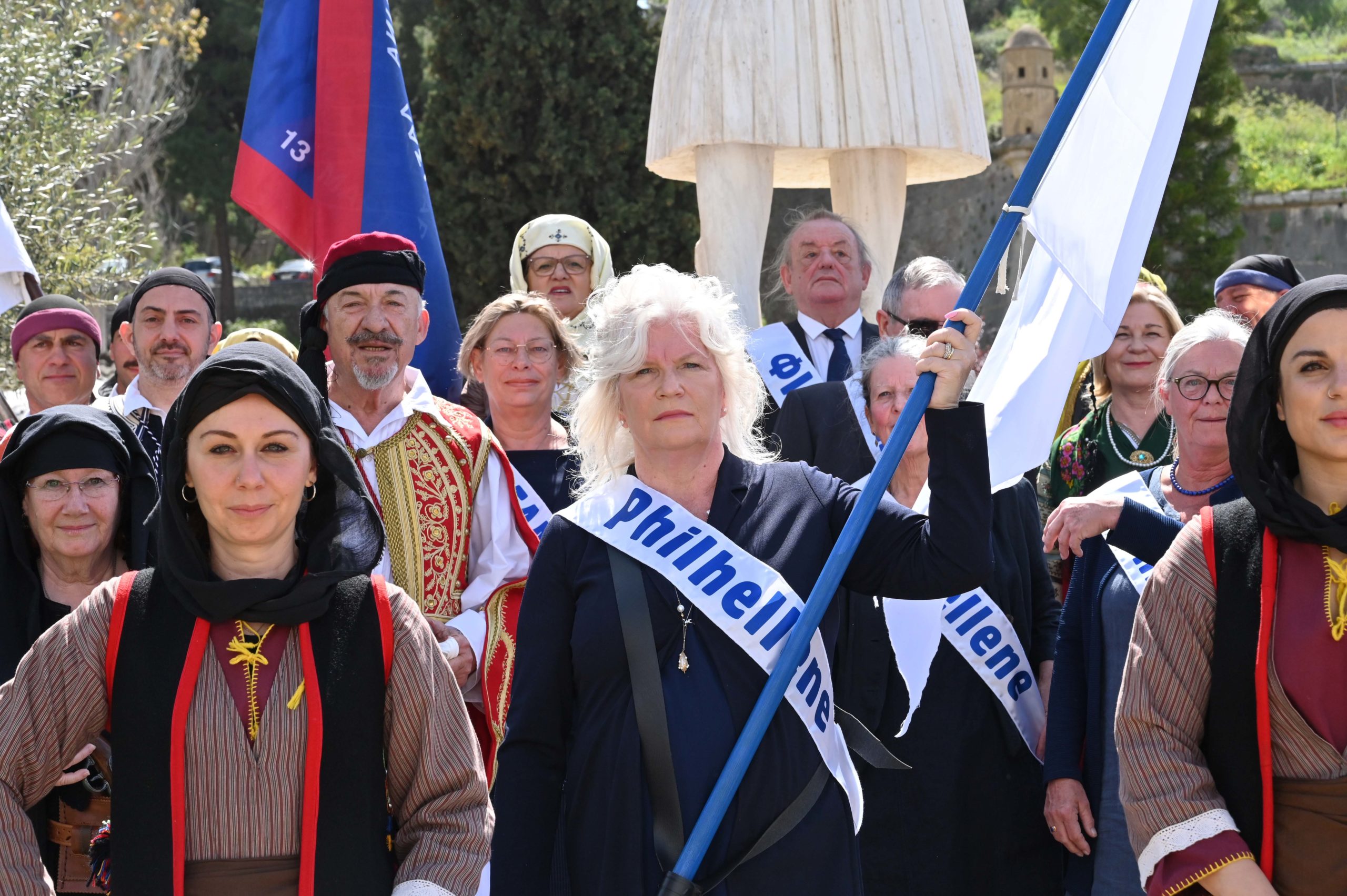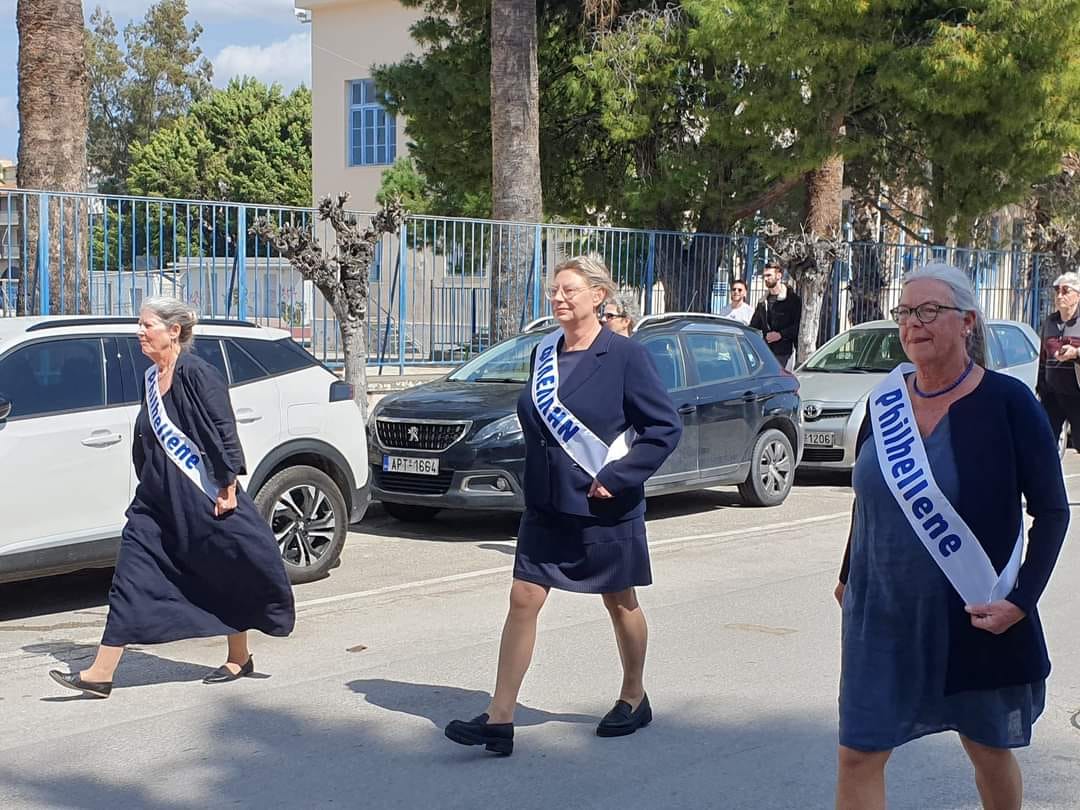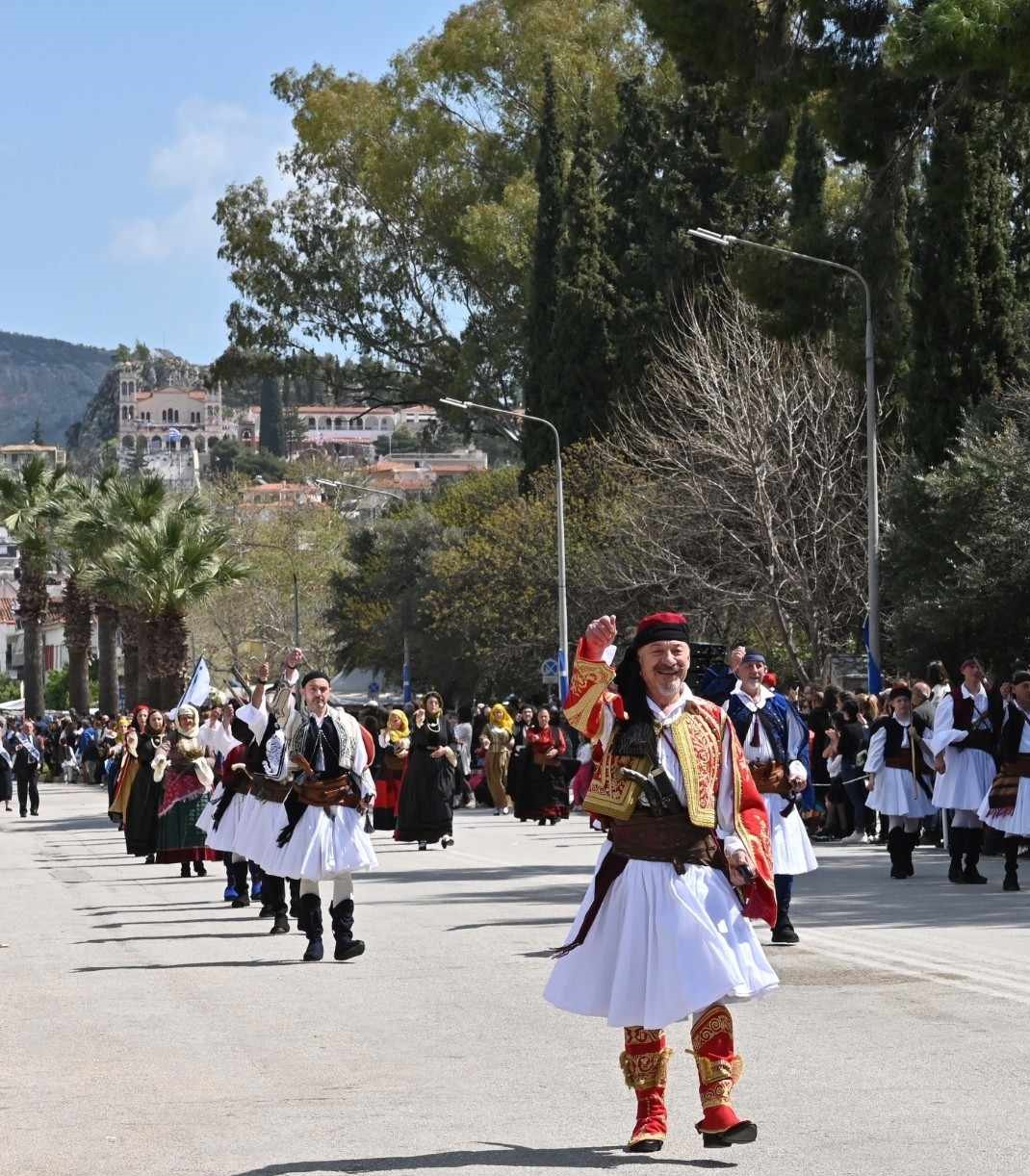
This year, for the first time, a small group representing the Philhellenes, people who are great admirers of Greece and Greek culture, proudly marched together with the Armatomenoi Moraites (Αρματωμένοι Mωραΐτες) Staikos – Staikopoulos in Nafplio’s Greek Independence Day parade of March 25th.
The association Armed Moraites – Staikos – Staikopoulos was founded in 2020 with headquarters in the Municipality of Nafplio, with the aim of reviving the historical events of the Greek revolution of 1821.

Participation in the Independence Day parade is always accompanied by emotion and pride for the Armored Moraites since it is a symbol of honor and glory. The Philhellenes flew the commemorative flag of Theodoros Kolokotronis, adorned with the blue cross of Saint Andrew, as a tribute to their compatriots who joined the Greeks in their struggle for freedom after centuries of Ottoman rule.
The flag was used in battles during the Greek Revolution and prominent military leaders, including Kolokotronis and Andreas Miaoulis, made their solemn vows to fight for liberation under it.
Through bravery and unwavering resolve, Greece eventually achieved independence from the Ottomans. A significant factor in their success was the intervention of the allied forces from Britain, France, and Russia in the critical naval battle of Navarino in 1827.

The participation of the Philhellenes in the Independence Day parade pays tribute to the courageous individuals who fought selflessly and laid down their lives to help secure Greece’s independence.
One of the most beautiful towns in the area of Argolis, in the eastern Peloponnese, Nafplio was the first capital of the newly-founded Greek state between 1823 and 1834. According to mythology, the town was founded by Nafplios, the son of the god Poseidon and the daughter of Danaus Amymone.
The town’s history runs back to the prehistoric era when soldiers there took part in the Argonautic expedition and the Trojan War. The town declined during Roman times and flourished again during the Byzantine era. Frankish, Venetian, and Turkish conquerors left their mark on the town and influenced its culture and architecture throughout the centuries.
Philhellenes who advocated for Greek independence
Philhellenism, the collective term for Philhellenes, was an intellectual movement which reached its height at the turn of the nineteenth century. It gave fuel to the sentiments that led Europeans such as Lord Byron, Charles Nicolas Fabvier, and Richard Church to advocate for Greek independence from the Ottoman Empire.
Well-known Philhellenes of history include Lord Byron, Victor Hugo, and Friedrich Nietzsche, the latter of which was one of the most staunch Philhellenes. Nietzsche wrote that “the Greek is the man who has achieved the most,” and “the Greek people are the only people of genius in the history of the world.” Lastly, according to Nietzsche, “the Greeks have never been overestimated.”
See all the latest news from Greece and the world at Greekreporter.com. Contact our newsroom to report an update or send your story, photos and videos. Follow GR on Google News and subscribe here to our daily email!



